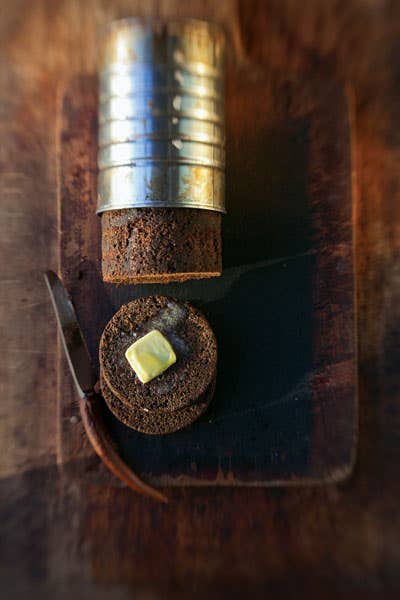
Can Do: How To Make Brown Bread
As I researched the traditional New England baked bean supper for Issue 145, I fell for the bread that typically comes with the meal. Wholesome, substantial brown bread—equal parts corn, rye, and wheat flour combined with molasses and buttermilk—is steamed in a coffee can that rests in a hot-water bath, on the stove top or in the oven, until the batter rises into a spongy bread. The recipe has roots in the Colonial era, when New Englanders baked a similar loaf in a wood-fired oven. Though it's hard to pinpoint when people began steaming brown bread, that method had caught on widely by the mid 1800s, when, according to historian Sandy Oliver, brown bread surged in popularity due to a revival of interest in early American foods. Today's brown bread is lighter than the original, because of the addition of baking powder, which, when activated by acids in the buttermilk and the molasses, releases carbon dioxide and leavens the bread. You can buy a respectable version made by B&M, the Maine cannery that's also one of this country's largest producers of baked beans. But we've found that this rich, sweet, tangy bread is easy (not to mention fun) to make. We wouldn't think of eating baked beans without a thick slab of it to sop up the sauce.
Keep Reading
Continue to Next Story










